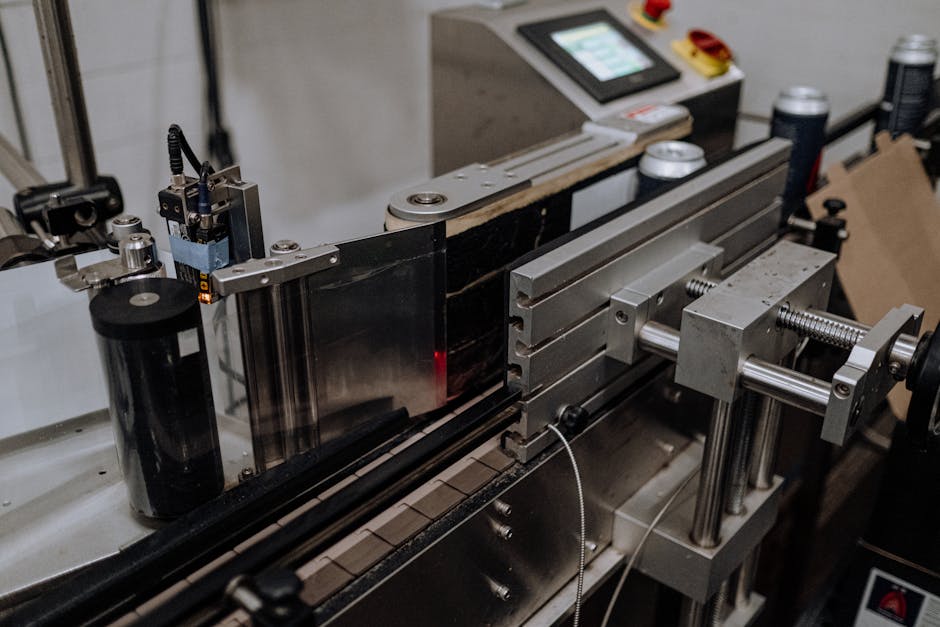Embark on a journey into the innovative realm of electronics assembly technologies. Discover how these cutting-edge advancements are reshaping the landscape of manufacturing, enhancing efficiency, and revolutionizing production processes. From automated assembly techniques to quality enhancement through advanced technologies, explore how these developments are streamlining manufacturing operations for a brighter, more efficient future.
Revolutionizing Production Processes
In the realm of electronics assembly, the future is now. With the rise of smart factories and Industry 4.0 initiatives, manufacturers are embracing a new era of interconnected, data-driven production. These advanced technologies are not just changing how products are made but also redefining the entire manufacturing ecosystem. By integrating AI, IoT, and robotics into assembly lines, companies are achieving unprecedented levels of efficiency and productivity.
Moreover, additive manufacturing techniques such as 3D printing are revolutionizing the way electronic components are designed and produced. This additive approach allows for complex geometries, rapid prototyping, and customized production—all of which contribute to faster time-to-market and reduced manufacturing costs.
With the increasing demand for miniaturization and high-performance electronics, traditional assembly methods are being replaced by innovative solutions like micro-assembly and nano-manufacturing. These cutting-edge techniques enable the creation of ultra-small components with exceptional precision, opening up new possibilities for compact and efficient electronic devices.
Automating Assembly Techniques
Automation is at the heart of modern electronics assembly. By leveraging robotic systems, automated guided vehicles (AGVs), and collaborative robots, manufacturers can streamline the assembly process, reduce human error, and increase throughput. These intelligent machines work seamlessly alongside human operators, performing repetitive tasks with speed and accuracy.
Furthermore, the integration of machine vision systems and AI-powered algorithms ensures quality control and inspection are carried out with precision and efficiency. These technologies enable real-time monitoring, defect detection, and adaptive process control, ultimately enhancing product quality and reliability.
As Industry 4.0 continues to gain momentum, connected assembly lines powered by IoT devices are becoming the norm. These interconnected systems enable data sharing, predictive maintenance, and remote monitoring, facilitating a more agile and responsive manufacturing environment. By embracing automation and digitalization, companies can achieve higher efficiency levels and meet the demands of a fast-paced market.
The future of electronics assembly lies in the seamless integration of automation technologies with human skill and expertise. By combining the best of both worlds, manufacturers can optimize their production processes, accelerate time-to-market, and stay ahead of the competition in a rapidly evolving industry landscape.
Enhancing Quality through Advanced Technologies
Quality is non-negotiable in electronics assembly, and advanced technologies are playing a crucial role in raising the bar. Through the implementation of machine learning algorithms and predictive analytics, manufacturers can identify potential defects, optimize processes, and ensure consistent product quality.
Additionally, the adoption of smart sensors and IoT-enabled devices enables real-time monitoring of vital production parameters such as temperature, humidity, and vibration. By capturing and analyzing this continuous stream of data, companies can proactively address issues, prevent downtime, and maintain optimal manufacturing conditions.
Moreover, advanced assembly technologies such as solder jet printing, laser soldering, and selective conformal coating are enhancing the reliability and performance of electronic components. These precision manufacturing techniques minimize material waste, reduce rework, and improve the overall quality of the final product.
By embracing these advanced quality control measures and leveraging state-of-the-art inspection tools, manufacturers can deliver defect-free products that meet the highest industry standards. As quality becomes a defining factor in consumer choice, investing in advanced technologies is not just a strategic move but a necessity for long-term success.
The future of electronics assembly hinges on a relentless pursuit of quality excellence. By harnessing the power of advanced technologies, manufacturers can exceed customer expectations, drive innovation, and establish themselves as leaders in the competitive global market.
Streamlining Manufacturing Operations
Efficiency is the cornerstone of successful manufacturing operations, and electronics assembly is no exception. By implementing lean manufacturing principles, value stream mapping, and just-in-time production techniques, companies can eliminate waste, optimize workflow, and maximize resource utilization.
The use of digital twins and simulation software allows manufacturers to virtualize their production processes, conduct predictive analysis, and optimize equipment performance. These digital tools enable iterative design improvements, rapid prototyping, and efficient production planning, leading to reduced lead times and enhanced operational efficiency.
Furthermore, the adoption of cloud-based manufacturing platforms and collaborative robotics is transforming the way factories operate. These cloud solutions facilitate real-time data sharing, remote monitoring, and agile production scheduling, enabling companies to adapt quickly to market fluctuations and customer demands.
As the manufacturing landscape continues to evolve, embracing digital transformation and automation is no longer optional but essential for competitiveness. By streamlining their operations, optimizing workflows, and embracing emerging technologies, manufacturers can unlock new levels of efficiency, productivity, and profitability in the dynamic world of electronics assembly.
Embracing Technological Advancements
As we delve into the ever-evolving world of electronics assembly technologies, one thing remains clear—innovation is key. The continuous push for efficiency, quality, and automation in manufacturing processes is paving the way for a future where speed and precision go hand in hand. By embracing these advancements and staying at the forefront of technological progress, industries can ensure they are always one step ahead in the dynamic world of electronics assembly.


